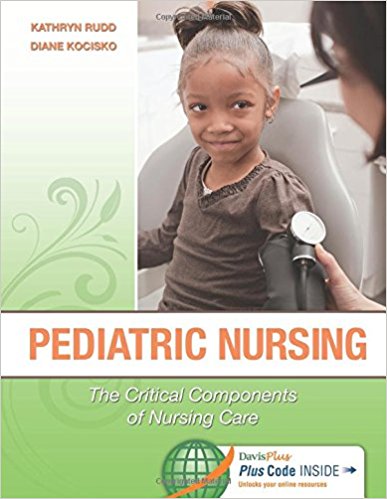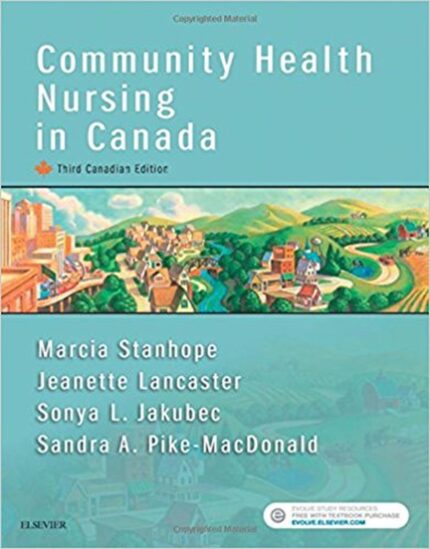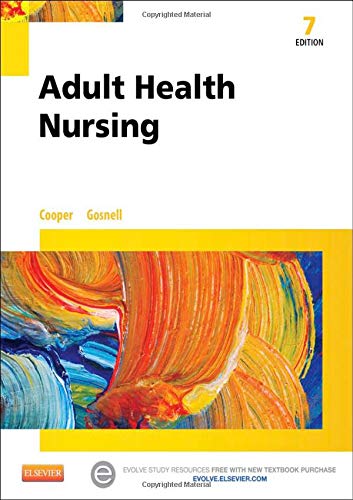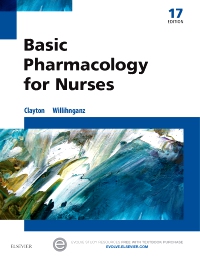Pediatric Nursing The Critical Components of Nursing Care 1st Edition by Kathryn Rudd – Test Bank
Chapter 5: End-of-Life Care
Multiple Choice
1. The pediatric nurse is having a conversation with parents who have children who have recently passed away. The nurse knows the parents understand the difference between bereavement and grief when the participants state:
1. “I am trying to prepare for my daughter’s death, but I just am not ready to do so.”
2. “Bereavement has caused me to experience sorrow for the loss of my daughter.”
3. “I can’t believe my daughter is gone.”
4. “If I make a deal that God takes me, then my daughter could come back to my family.”
ANS: 2
|
Feedback |
|
|
1. |
The parents are stating anticipatory grief. |
|
2. |
The parents are stating bereavement. |
|
3. |
The parents are in the denial phase of grieving. |
|
4. |
The parents are bargaining. |
KEY: Content Area: Death and Dying | Integrated Processes: Caring | Client Need: Psychosocial Integrity | Cognitive Level: Evaluation | REF: Chapter 5 | Type: Multiple Choice
2. The medical chart states that the parents are requesting “withdrawal of care” for a child with terminal leukemia. The nurse understands this request to mean:
1. To keep support measures which sustain life for the child.
2. To keep providing comfort care for the child.
3. To stop life-saving measures and allow the child to die naturally.
4. To stop providing comfort measures for the child.
ANS: 3
|
Feedback |
|
|
1. |
Support measures are not wanted by the parents. |
|
2. |
Comfort care is important, but this addresses the life-sustaining measures. |
|
3. |
Withdrawal of care relates to stopping heroic measures to sustain life. |
|
4. |
Comfort is essential in the last days of life for the family and the patient. |
KEY: Content Area: Death and Dying | Integrated Processes: Communication and Documentation | Client Need: Psychosocial Integrity | Cognitive Level: Knowledge | REF: Chapter 5 | Type: Multiple Choice
3. Ashley is a 5-year-old girl who is severely mentally handicapped and has been bedridden for the last 3 years after a near-drowning accident. Ashley has developed pneumonia and sustaining her life would require ventilator support. The staff nurse is to obtain information about legal guardianship because her parents have abandoned her at the hospital. The nurse knows that:
1. Legal guardianship is needed for a person to have medical information released to him/her.
2. The legal guardian must be present to care for the child.
3. Legal guardianship can only be obtained by her parents.
4. The legal guardian must take physical responsibility for the child.
ANS: 1
|
Feedback |
|
|
1. |
The medical information and consent needs to be given by someone with the best interests of the child in mind who can legally make decisions. Only information can be released to this person. |
|
2. |
The legal guardian does not need to be physically present, but must be reachable to discuss the plan of care. |
|
3. |
Legal guardians can be anyone with the best interests of the child in mind. |
|
4. |
The legal guardian may be the state, and foster parents would have the physical responsibility of caring for the child. |
KEY: Content Area: Legal | Integrated Processes: Care | Client Need: Psychosocial Integrity | Cognitive Level: Comprehension | REF: Chapter 5 | Type: Multiple Choice
4. Identify a developmentally-appropriate activity that can be used to speak to a 6 year old about the terminal illness of his sibling.
1. Playing checkers and speaking about the illness.
2. Playing with action figures and discussing how death occurs.
3. Playing with crayons and drawing pictures of how a child views his sibling at this time.
4. All of the above are correct.
ANS: 4
|
Feedback |
|
|
1. |
Having a diversional activity allows the child to express themselves without having to look directly at the adult. |
|
2. |
Action figures can help act out how death occurs. |
|
3. |
Expression through art is a technique that children are able to comprehend and is not threatening to them. |
|
4. |
Diversion, acting, and art can help children express and discuss the death process. |
KEY: Content Area: Death and Dying | Integrated Processes: Communication and Documentation | Client Need: Psychosocial Integrity | Cognitive Level: Application | REF: Chapter 5 | Type: Multiple Choice
5. Palliative care should be considered for a terminally-ill child:
1. Within 1 year of death.
2. Within 2 months of death.
3. When a terminal illness is present.
4. At no time. It is not appropriate for children.
ANS: 3
|
Feedback |
|
|
1. |
Planning can occur, but should be started when a terminal diagnosis is present to provide the plan of care for the child. |
|
2. |
Planning can occur, but should be started when a terminal diagnosis is present to provide the plan of care for the child. |
|
3. |
The knowledge of the terminal illness and letting the family and patient be involved in the decision-making processes facilitates palliative care so that the patient is as comfortable as possible. |
|
4. |
Palliative care is appropriate for children with a terminal illness. |
KEY: Content Area: Death and Dying | Integrated Processes: Caring | Client Need: Psychosocial Integrity | Cognitive Level: Comprehension | REF: Chapter 5 | Type: Multiple Choice
6. Palliative care allows the child to:
1. Have a graceful, natural death.
2. Attempt to use every type of medical process possible to sustain life.
3. Abruptly end life.
4. Comfort the family before death.
ANS: 1
|
Feedback |
|
|
1. |
Palliative care focuses on the natural death process in the most comforting way possible. |
|
2. |
Medical processes to sustain life are not considered important in palliative care. |
|
3. |
Palliative care works with patients once a terminal illness is diagnosed in order to have a plan of care. |
|
4. |
Palliative care helps comfort the family and the patient. |
KEY: Content Area: Death and Dying | Integrated Processes: Caring | Client Need: Psychosocial Integrity | Cognitive Level: Comprehension | REF: Chapter 5 | Type: Multiple Choice














Reviews
There are no reviews yet.